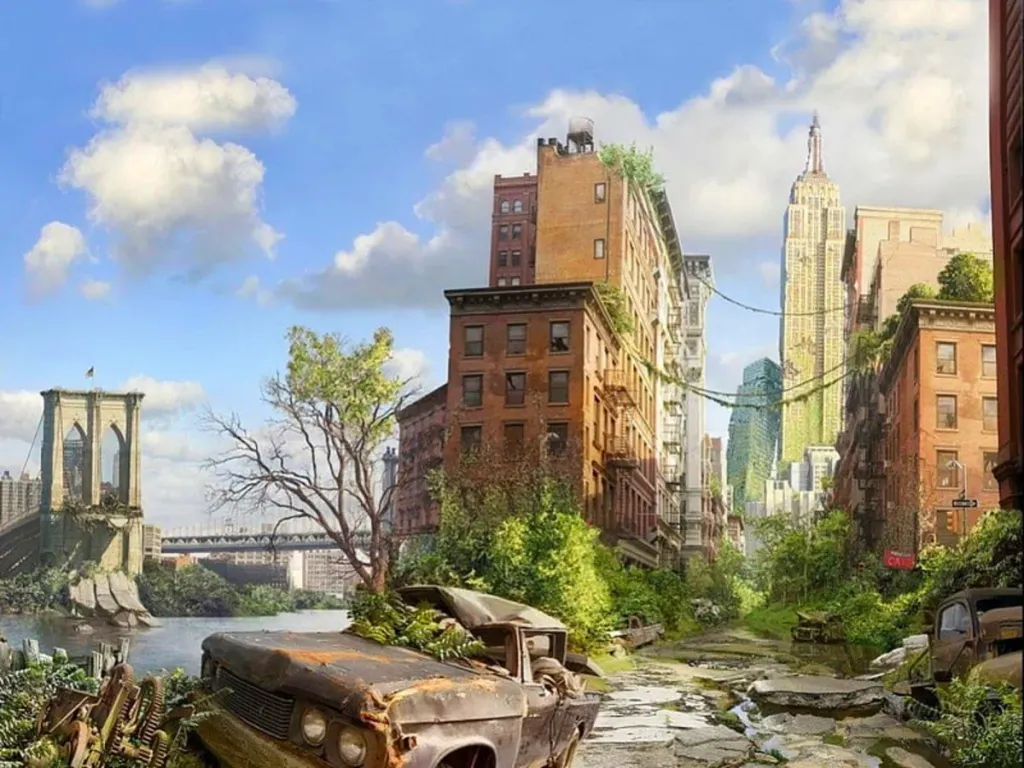Have you ever wondered what the world would be like if everyone suddenly disappeared? What will happen to all our belongings? What about our homes, schools, neighborhoods, cities? Who will feed the dog? Who will mow the lawn? Although it’s a common theme in movies, TV shows, and books, it’s still weird to think about the end of humanity. But scientists hypothesized what the Earth would look like if humanity suddenly “disappeared”. This is interesting to know.
Absolute silence and peace
If humanity were to suddenly disappear from Earth, this world would be desolate, silent, and would regain its natural harmony. Since our homes, cars and infrastructure are designed for comfort and convenience, it may seem obvious at first glance that there is no man-made noise. Without humans, the sky would be bluer and the air clearer. Wind and rain would clean the Earth’s surface; all the smoke and dust created by humans would disappear.
neglected infrastructure
In the first year after his disappearance, many things would fall into a neglected state. With no one to manage their operations, the fountains would dry up and the water systems would run out of water. Electric lighting would cease due to lack of control and support of power plants. Buildings will deteriorate rapidly due to the influence of natural factors and neglect.
Decades later, concrete structures would begin to deteriorate due to natural processes such as soil movement and plant growth in cracks.
The flowering of the plant and animal worlds
Nature would regain control over the region. Grass and weeds would take over our gardens and urban landscapes. Plants start to spread because no one does anything to limit their growth. Many insects and bugs would return, maintaining their role in the ecosystem.
The lands that used to belong to humans have been taken over by animals. Small animals such as mice, marmots, and skunks would populate our territories first, followed by larger animals such as deer, coyotes, and bears. When we look at the world after the extinction of humanity, we see the power of nature gradually returning. Green begins to return to the cities and gray covers the concrete jungle. Trees sprout in underground car parks and on the roofs of buildings, creating new, magnificent landscapes.
Without human activity, the wild world regains its strength. Eliminating pollution allows animals, plants and ecosystems to return to natural harmony. Nature reserves and parks are expanding, becoming inaccessible to humans, but becoming oases for wildlife.
Living things also adapt to new conditions. Accustomed to living next to people, animals begin to master deserted areas. Wolves can return to desert cities and fish to clean rivers.
There can be disastrous consequences
But this world without people is not a fairy tale paradise. The absence of humans does not make nature perfect. Some animals, such as domestic cats and dogs, fall victim to being alone because they do not know how to survive without human assistance. Without a balanced diet and medical care, many of the intelligent animals domesticated for our service can run into problems.
In addition, the sudden disappearance of humanity can have devastating consequences for the immediate environment. Closing nuclear power plants can lead to nuclear emissions that will contaminate large areas with radioactive materials. This will pose a serious threat to the environment and animal life.
In addition, the absence of people can lead to the destruction of buildings and infrastructure, especially where there are no natural self-cleaning processes. Without support and repair, buildings can gradually crumble, with dangerous consequences for wildlife, which will once again have to adapt to the new conditions.
Agriculture used to provide food for the population is also being destroyed. Without tillage and harvesting, natural ecosystems begin to grow and turn rural areas into wilderness areas. Changing landscapes can cause the mass extinction or extinction of some plant and animal species.
Restoration of the world ecosystem
On the other hand, eliminating human influence on nature can provide a chance for some endangered animal and plant species to recover. Removing threats from deforestation, pesticide overuse and pollution can help some ecosystems recover. Another potential advantage is the conservation of natural resources. Stopping the industrial extraction of oil, gas and other natural resources could allow the land to save and preserve these important resources for future generations.
In any case, the transition to an unmanned post-apocalyptic world will have a significant impact on Earth’s biosphere and climate. For example, a reduction in greenhouse gas emissions due to the cessation of industrial activities could lead to a reduction in global warming and climate change. This can affect weather, sea levels and the stability of ecosystems.
On the other hand, some animal species that normally depend on humans or live near human settlements may become extinct or endangered due to lack of interaction with humans. For example, some bird, rodent and insect species affect people’s lifestyles by controlling pest populations or pollinating plants. The extinction of such species can cause an imbalance in ecosystems and affect other organisms.
In general, it is not easy to predict with absolute accuracy the consequences of the end of human influence on Earth, as this is a unique case in history. Natural processes can begin to restore balance, but this also takes time, perhaps even centuries or millennia.




















